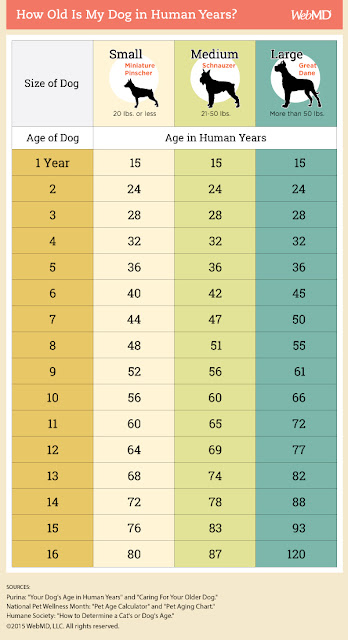Written by
Australian Dog Lover
15:55:00
-
0
Comments
Canine Massage Therapy is a holistic - meaning that the whole body is treated rather than just the injured spot - hands-on therapy that involves the manipulation of the soft tissue structures of the body to prevent and alleviate pain, discomfort, muscle spasms, and stress rather than masking the issues with analgesics.
It provides relaxation, increased oxygenation, relief from pain, improved joint flexibility and miscellaneous benefits to the immune system.
What is Canine Arthritis?
Arthritis is an inflammation of your dog’s joints. It is also known as degenerative joint disease. It is a progressive and permanent long term deterioration of the cartilage that surrounds your dog’s joints.
It tends to become more obvious as dogs age and start to slow down and find some of their day to day activities more challenging. But did you know the seeds for arthritis are sown in your dog’s early years?
In fact, by four years of age many dogs, particularly larger breeds will already have some form of arthritis. What many dog owners do not realise is that early stage arthritis might not be obvious until the degeneration has progressed to a point where it is effecting how your dog moves and feels.
So adopting an early preventative approach gives you the best chance of minimising the risk or effects of arthritis affecting your dog.
What are the Common Signs I should be Aware of?
Arthritis is an inflammation of your dog’s joints. It is also known as degenerative joint disease. It is a progressive and permanent long term deterioration of the cartilage that surrounds your dog’s joints.
It tends to become more obvious as dogs age and start to slow down and find some of their day to day activities more challenging. But did you know the seeds for arthritis are sown in your dog’s early years?
In fact, by four years of age many dogs, particularly larger breeds will already have some form of arthritis. What many dog owners do not realise is that early stage arthritis might not be obvious until the degeneration has progressed to a point where it is effecting how your dog moves and feels.
So adopting an early preventative approach gives you the best chance of minimising the risk or effects of arthritis affecting your dog.
What are the Common Signs I should be Aware of?

Watch out for the following signs:
- Intermittent lameness
- Stiffness or reluctance to get up or move, often after a period of lying down
- Hesitation when getting in and out of the car, up and down the stairs or getting up onto the couch
- Changes in how they walk, such as occasional bunny hopping when moving
- Reluctance to walk as far as they used to or as often
Interestingly enough, many dog owners have told me over the years that they don’t tend to worry about arthritis affecting their dog until they are into their senior years.
I remind them that dog’s lives are relatively much shorter than our human lives (ref. enclosed table), so the aging process happens much faster for our dogs.
So it is always worth looking at ways we can help slow down the aging process for our dogs and minimise wear and tear on their bodies.
What are some of the Causes of Arthritis?
There may not be one definitive cause of arthritis and the likelihood of it affecting your dog, but here are some things for you to consider that could increase the risk of your dog developing arthritis.

1. Exercise your dog appropriately for their age and breed. Be realistic about what you ask of your dog and whether their current exercise routine is taking these factors into consideration. If your dog likes to play high intensity chase games, you need to thing about the effect that it is is having on their muscles and joints.
2. Dog Obesity, for every one pound your dog is overweight, it puts an additional four pounds of sheer force through their joints. So keeping your dog at a healthy weight can significantly improve their joint health.
3. A healthy balanced diet can have a significant impact on your dog’s joint health. Making sure your dog has good quality nutrients and a healthy functioning digestive and immune system can enhance their quality of life and reduce the risk of arthritis.
Studies have shown that 65% of dogs between the age of 7 and 11 years will have some degree of arthritis affecting their quality of life. Another study found the average age for the initial signs of arthritis at just 3.5 years of age in some medium and larger breed dogs.
What are some of the Things I can Do to Prevent Arthritis in my dog?
#1. Massage
Massage is a great way to help keep your dog’s muscles healthy and joints moving well. Massage can help relieve tightness and soreness, maintain muscle tone in older dogs and help minimise the risk of canine arthritis.
When muscles go into a compensation pattern, possibly as the result of overuse or injury, it will affect how your dog moves. Some muscles start to overwork and some underwork, which can result in uneven stress and wear on your dog’s joints, which increases the risk of arthritis.
So learning some simple massage techniques can be a very effective preventative strategy to help keep your aging dog mobile and healthy. When you massage your dog it is important that you use a gentle pressure and only massage over their muscles and never directly on their spine.
Make sure your dog is lying down and relaxed before you start and pay close attention to your dog when you are massaging them, and stop if they give you any signs they are uncomfortable or in pain. Aim to keep your hands relaxed and use a smooth rhythmic motion when massaging your dog’s muscles.
There are other things you can do to help prevent or manage the symptoms of Arthritis to help keep your dog’s muscles strong such as:
#2. Acupuncture
#3. Stretching
#4. Hydrotherapy
#5. Exercise Therapy
#2. Acupuncture
#3. Stretching
#4. Hydrotherapy
#5. Exercise Therapy
What you do now for your dog will help set them up for the best quality of life they can possibly have, regardless of their age, as well as improve their joint health and movement quality.
So please do not wait for degenerative conditions like Arthritis to become a serious health issue for your dog. Now is the time to start thinking about helping minimise this risk for your dog and help them live a longer, healthier, happier life with you.
 |
| Tim Norris and his dog Pippin |
Tim specialises in helping aging and dogs with arthritis have the best quality of life possible.
To get your free copy of his e-book "The Older Dog Longevity Blueprint: 5 strategies to help your dog live a longer life", please visit www.bothendsofthelead.com.au









No comments
Post a Comment